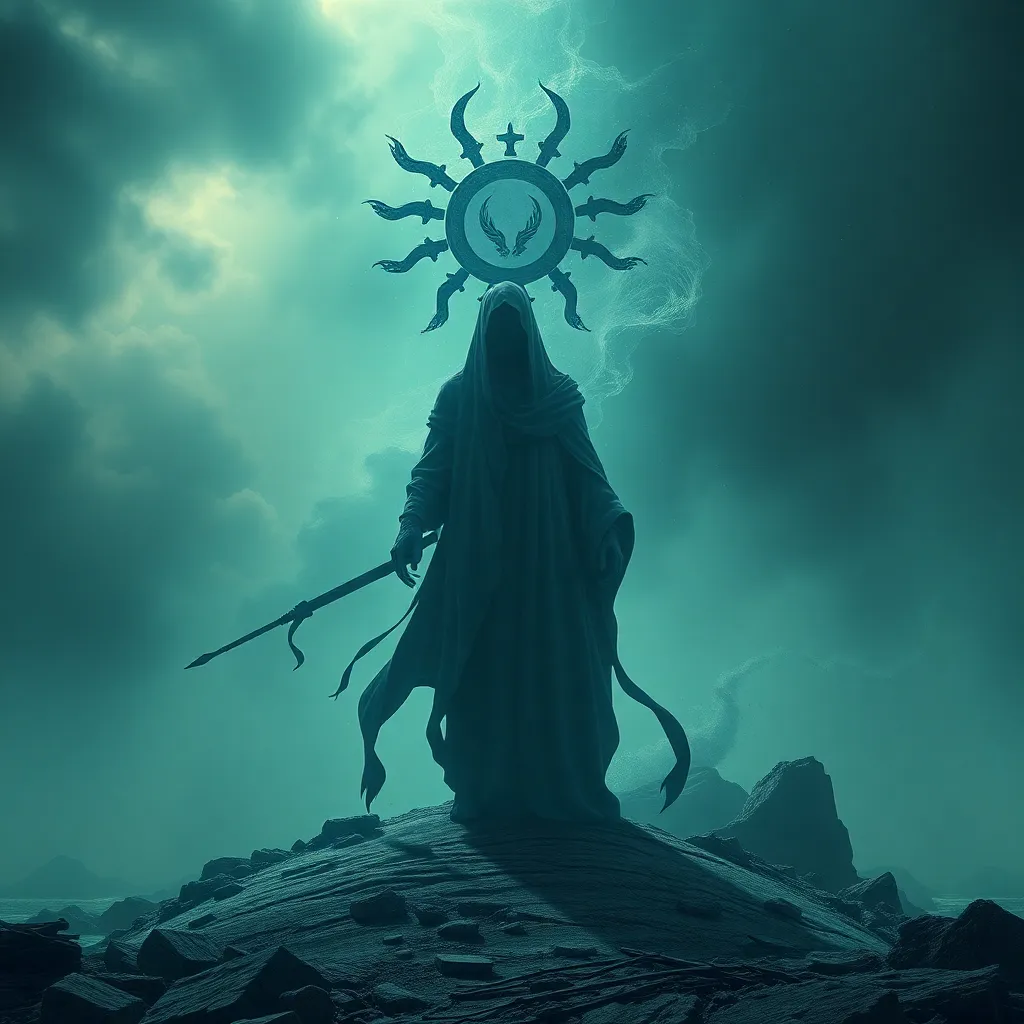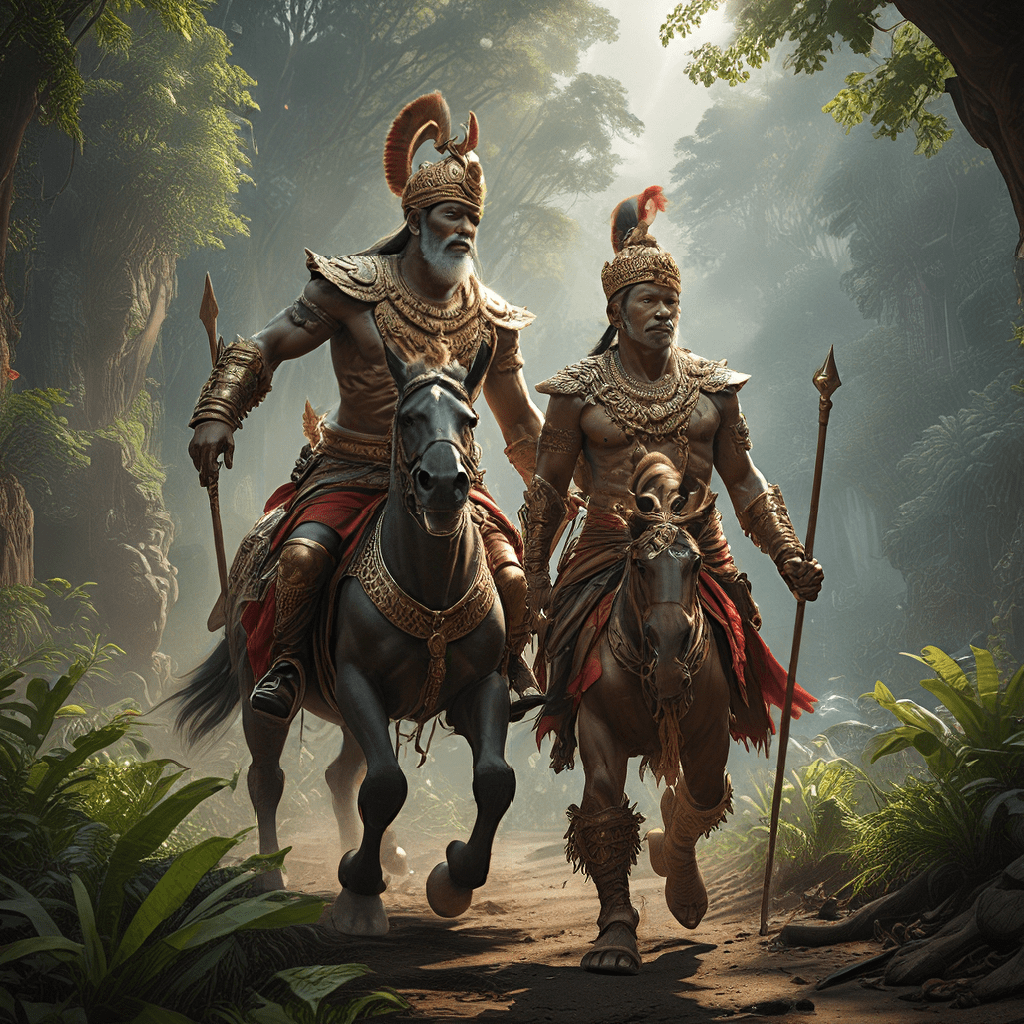The Deathless in Philosophy: Examining Koschei’s Existential Crisis
I. Introduction
Koschei the Deathless is a prominent figure in Slavic folklore, often depicted as a powerful and malevolent being whose immortality is intertwined with a hidden vulnerability. His character raises profound questions about the nature of immortality, identity, and the human condition. In philosophical discourse, the concept of immortality is not just a matter of living forever; it encompasses deeper existential implications that challenge our understanding of life and death.
This article aims to explore Koschei’s existential crisis as a reflection of the broader philosophical inquiries surrounding immortality. By examining his character and the implications of his eternal life, we can gain insights into the human experience of meaning, suffering, and the quest for purpose.
II. The Concept of Immortality in Philosophy
A. Historical perspectives on immortality
The idea of immortality has fascinated philosophers throughout history. Ancient civilizations often viewed immortality as a divine attribute, reserved for gods and heroes. In Western philosophy, thinkers like Plato suggested that the soul is immortal and exists beyond physical death. Eastern philosophies, such as Buddhism, approach immortality differently, often viewing it as a cycle of rebirth rather than a permanent state.
B. Philosophical implications of eternal life
Immortality raises fundamental questions:
- What does it mean to live forever?
- Does eternal life enhance the value of existence, or does it diminish it?
- How does one find meaning in a life without end?
These inquiries highlight the complexities of eternal life, prompting discussions about the nature of happiness, fulfillment, and the human experience.
C. The dichotomy of life and death in existential thought
Existentialism often emphasizes the tension between life and death. Philosophers like Heidegger and Sartre argue that awareness of mortality gives life its meaning. In this context, the absence of death can lead to a feeling of aimlessness, raising questions about the value of existence without an endpoint.
III. Koschei the Deathless: A Character Study
A. Origins and cultural significance of Koschei
Koschei the Deathless appears in various Slavic fairy tales, often portrayed as an antagonist who kidnaps princesses and battles heroes. His character represents the struggle between good and evil, and his immortality is both a blessing and a curse. The tales serve as allegories for the human condition, reflecting societal fears and aspirations.
B. Characteristics and powers attributed to Koschei
Koschei is characterized by his cunning nature and mastery of dark magic. His most notable trait is his immortality, which is bound to a hidden object, often a needle or an egg, that must be destroyed to defeat him. This symbolic representation of strength and vulnerability encapsulates the paradox of power in the face of existential dread.
C. Symbolism of Koschei in Slavic mythology
In Slavic mythology, Koschei symbolizes the fear of death and the unknown. His immortality, while seemingly desirable, serves as a reminder of the burdens that come with eternal life. He embodies the struggle against the inevitability of mortality, and his character invites reflection on the costs of living forever.
IV. The Nature of Koschei’s Existential Crisis
A. Defining existential crisis in philosophical terms
An existential crisis occurs when an individual questions the meaning and purpose of their existence. This often leads to feelings of despair, isolation, and anxiety. For Koschei, his immortality presents a unique form of existential crisis; he is eternally alive yet forever burdened by the consequences of his actions and the isolation that comes with being deathless.
B. Koschei’s relationship with mortality and meaning
Koschei’s immortality creates a disconnect from the natural cycle of life and death. This disconnection results in a perpetual search for meaning, as he grapples with the implications of his eternal existence. Without the finality of death, the significance of life can become obscured, leading to profound existential questioning.
C. The isolation and despair of eternal life
Immortality, as experienced by Koschei, is marked by isolation. The inability to form lasting connections, coupled with the knowledge that he will outlive everyone he encounters, fosters a sense of despair. This emotional turmoil reflects the broader existential theme of loneliness that accompanies the search for meaning in an infinite existence.
V. The Role of Suffering in Immortality
A. Analyzing the paradox of eternal suffering
Koschei’s immortality is not merely a gift; it carries the burden of eternal suffering. The paradox of being unable to die raises questions about the nature of suffering and its role in shaping identity. For Koschei, suffering becomes a defining aspect of his existence, leading to a cycle of despair that challenges the notion of immortality as inherently positive.
B. Comparative perspectives: Koschei and other immortal figures
Other immortal figures in literature, such as vampires or gods, often grapple with similar existential dilemmas. For instance:
- Vampires experience isolation and moral conflict, questioning their humanity.
- Gods in various mythologies often exhibit traits of ennui and detachment, reflecting the burdens of eternal life.
These comparisons enrich the understanding of Koschei’s character and the universal themes of suffering and existential inquiry.
C. Philosophical interpretations of suffering as a catalyst for growth
Philosophers like Nietzsche argue that suffering can lead to personal growth and empowerment. In this light, Koschei’s eternal suffering may serve as a catalyst for self-discovery and a deeper understanding of existence, despite the pain it entails.
VI. The Search for Meaning Beyond Death
A. Koschei’s quest for purpose in life and immortality
Koschei’s journey reflects the human desire for purpose, even amidst the despair of eternal life. His character embodies the struggle to find meaning in a world where death is absent, prompting reflections on the nature of fulfillment and the quest for significance.
B. Existential philosophies on meaning-making in an eternal context
Existentialists like Camus suggest that individuals must create their own meaning in a seemingly indifferent universe. This philosophy resonates with Koschei’s experience, as he seeks to assert his identity and purpose despite the challenges of his immortal existence.
C. The relevance of mortality in shaping existential purpose
Mortality plays a crucial role in defining purpose. The awareness of life’s impermanence can inspire individuals to seek significance in their actions and relationships. For Koschei, the absence of death amplifies his struggle for meaning, highlighting the importance of mortality in existential thought.
VII. Contemporary Reflections on Immortality
A. The impact of modern science on concepts of immortality
Advancements in science and technology have sparked discussions about the possibility of extending life indefinitely. These developments raise ethical questions about the implications of immortality and the human experience. How do we reconcile the desire for eternal life with the lessons learned from mortality?
B. Philosophical discourse on digital immortality and legacy
With the rise of digital technologies, the concept of digital immortality has emerged, where individuals can leave behind a digital legacy. This notion challenges traditional ideas of existence and raises questions about the authenticity of virtual identities and the essence of being.
C. Koschei’s lessons for contemporary existential thought
Koschei’s story serves as a cautionary tale about the pursuit of immortality. It encourages contemporary thinkers to reflect on the value of life, the importance of connection, and the necessity of grappling with mortality in shaping our understanding of existence.
VIII. Conclusion
Koschei the Deathless embodies the complexities of immortality and the existential crises that accompany it. His character serves as a lens through which we can explore profound questions about meaning, suffering, and the human condition. As we navigate our own lives, the lessons from Koschei’s journey remind us of the significance of mortality in shaping purpose and existence.
In a world increasingly obsessed with the idea of living forever, Koschei’s story holds relevance, urging us to embrace the fleeting nature of life and to find meaning in our shared human experience.



